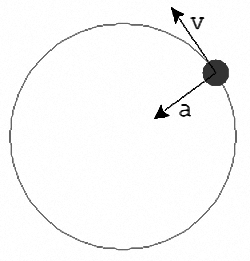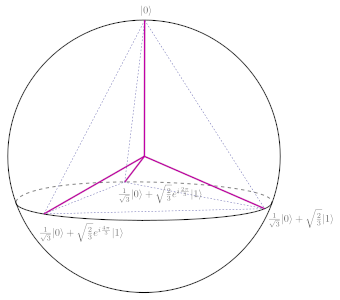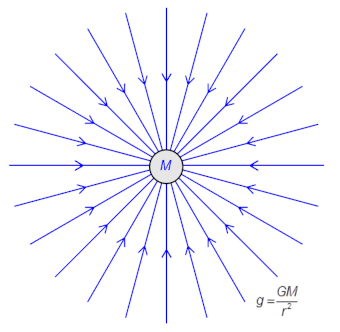Geometry and Dynamics of the Solar System
by Frank Hoogerbeets — published 11 May 2023, revised 15 January 2026
1. Basic Universal Principle
2. Geometric Development
3. The Planets
4. Orbital Motion
5. Orbital Period
6. The gravitational constant
7. Magnetic fields
In 1766 German astronomer Johann Daniel Titius mentioned a mathematical rule that describes the mean distance or semi-major axis of the planets from the Sun. This rule was published by his colleague Johann Elert Bode in 1772 and is since known as the law of Titius and Bode. Before Titius and Bode the Scottish mathematician and astronomer David Gregorie described an approximation of this law, which was found in his text book 'The Elements of Astronomy' (1715). For a long time it was considered an emperical law and referred to as such in physics and astronomy books. Today there is a tendency among scientists to consider the Titius-Bode law a 'mathematical coincidence'. Since 2006 the science journal Icarus no longer accepts papers with new interpretations of this law.

David Gregorie
|

Johann Daniel Titius
|

Johann Elert Bode
|
The rule generally referred to is mathematically defined as
whereby
The result is the mean distance in astronomical units (AU), so for Mercury, for Venus, for Earth, etc.
The rule in this form is from an astronomical perspective, whereby the result is a close approximation of the actual mean distance of each planet from the Sun, expressed in AU. We usually do not see an attempt to explain this mathematical rule that adds 4 and uses a specific geometric progression from 0 to 3 to 6 to 12 etc. Why is it a progression of number 3 and why is number 4 added?
Basic Universal Principle
Everything in the Universe is cyclical, whether it is a star revolving around the centre of a galaxy, a planet around a star, a moon around a planet or an electron around an atom's nucleus. The first recognition of a cycle for life on Earth is birth and death. We see leaves born on tree branches during each Spring and die each Fall with our planet's seemingly infinite orbital motion around the Sun. A cycle is circular by definition, whereby ellipses and spirals are special cases.
From mathematics we know that in order to uniquely define a circle, three points must be known. This is not a mathematics invented by humans; it is a universal principle and here we touch on the three fundamental aspects of life that literally build cycles on all levels of existence: birth-life-death. These three aspects have been known by various names in many cultures throughout history. So is it a coincidence that we find a geometric progression specifically of number 3 in the Titius-Bode law, or is the underlying structure of the Solar System based on a universal principle?
The basic principle of the Universe is the polarity birth-death and the constant that flows through it in different forms: life. Electricity in our homes is but one example of this principle: there are two wires, one positive and one negative, which allow electrons to flow through a circuit. This polarity is known by different names: birth-death, positive-negative, active-passive, male-female to name a few. The third aspect, life, is neutral; it is neither positive nor negative, but is the result of the two. The three aspects of the Universe in total harmony are geometrically expressed by the equilateral triangle, with three angles of 60° and each aspect at equal distance from each other (figure 1).

(figure 1)
Geometric Development
Back to the Titius-Bode law, we see a progression of number 3, but a progression or development needs polarity in order to take place, because without interaction of two opposite poles nothing happens. This is true on all levels of existence. So where is the polarity in the numerical sequence? It is right at the beginning:
Obviously, action or development cannot happen at the negative pole; it happens at the positive or active pole. So the full geometric development at the core of the Titius-Bode law should have the form of sequence 1.
(sequence 1)
This geometric progression is specific to the Solar System, but no matter the type of progression or development, the basic action is always multiplication or mirroring of the three fundamental aspects within themselves so that smaller cycles can be built within larger cycles and vice versa (figure 2).

(figure 2)
In its perfect geometric form, a mirroring of the three fundamental aspects always results in the development of 1 to 4, geometrically from one triangle to four triangles, whereby the binding of the three aspects is always preserved, both in the triangular and linear fashion. The basic principle of 4 is expressed by the four cardinal points of the Universe, usually referred to as the four wind directions, which are fixed and never change, proving their coordinating function. Not only that, the triangles in figure 2, when folded, form a tetrahedron, the minimal stable 3D polyhedron at the core of every sphere, as we will see later on with the definition of GM. The next step in this geometric development is the mirroring of each of the four triangles, resulting in sixteen (4x4) triangles (figure 3).

(figure 3)
It is important to realize the characteristics of the numbers 1, 4, 16, 64, 256, 1024, ... as their digital roots express an infinite repetition of the numbers 1, 4, 7 without exception: (1+6=7), (6+4=10; 1+0=1), (2+5+6=13; 1+3=4), (1+0+2+4=7). The numbers 4 and 7 themselves are expressions of number 1: (1+2+3+4=10; 1+0=1), (1+2+3+4+5+6+7=28; 2+8=10; 1+0=1), so the infinite repetition 1-4-7 is essentially an expression in a more concrete form of the three aspects 1-1-1, whereby 1=positive, 4=neutral and 7=negative. In the visible electromagnetic spectrum we distinguish seven colors, three primary and four secondary. If we were to apply the same principle of adding 4 to 3, the geometric development of sequence 1 of the Titius-Bode law takes the form of sequence 2.
(sequence 2)
Every interaction of positive and negative in the Universe results in a new expression of the three fundamental aspects, whereby polarities rotate and alternate. The expression of the first interaction is 1 + 2 = 3 (figure 4). The next expression is a multiplication by the result (3) of the first polarity's interaction (figure 5), whereby the polarity rotates and alternates, meaning that positive (+) becomes neutral, negative (-) becomes positive and neutral becomes negative. This second expression of the three fundamental aspects of the Universe contains the key harmonics that build and influence electromagnetic currents and subsequently all matter. This becomes apparent with the expression of the third step, the multiplication by the result (15) of the second polarity's interaction (figure 6).

geometric development of number 3 with alternating polarity rotation
It is not a coincidence that the electric and magnetic component of the electromagnetic wave are in a 90° relationship, as 90 is the neutral aspect of the third expression. This expression defines the major SSGI geometric harmonics within 0°-180° between the planets that result in amplified electromagnetic influence, especially when Mercury and Venus and the Moon are involved. Hence, it is also not a coincidence that the numbers of sequence 2 of the Titius-Bode law multiplied by the sum of the second polarity's interaction (15) closely match the observed mean distances of the planets from the Sun expressed in million kilometers (sequence 3). The very electromagnetic field of the Solar System guarantees this geometric harmonic distribution of the planets (and asteroid belts).
(sequence 3)
In 1791 the metre as a fundamental unit of length was officially defined by the French Academy of Sciences as one ten-millionth of a quarter meridian, so that Earth's circumference would be 40 000 kilometers. Coincidentally, the ratio of Earth's circumference and Earth's mean distance from the Sun is 1:3750, which means that the ratio of a quarter meridian to Earth's mean distance from the Sun is 15 000.
If a quarter meridian is defined as 10 000 km then Earth's mean distance from the Sun is 150 000 000 km.
Maybe it is a coincidence, or maybe this was one of the reasons why a quarter meridian was used to define the metre. We will probably never know. In any case, the second polarity's interaction 15 will turn out to be key in the next parts, right down to the gravitational constant and the Sun's mass.
The Planets
So far we have only looked at the geometric blueprint of the Solar System. But how do the planets actually relate to this geometry? If we consider sequence 3 above we can correlate the planets to the mathematical numbers and their astronomical equivalents expressed in millions of kilometers (table 1).
| planet | math r | real r |
|---|---|---|
| - | 15 | - |
| Mercury | 60 | 57.9 |
| Venus | 105 | 108.2 |
| Earth | 150 | 149,6 |
| Mars | 240 | 228.0 |
| Ceres (asteroid belt) | 420 | 414.0 |
| Jupiter | 780 | 778.5 |
| Saturn | 1500 | 1432.0 |
| Uranus | 2940 | 2867.0 |
| Pluto (Kuiper belt) | 5820 | 5869.7 |
(table 1)
The astronomical values are very close to the mathematical numbers. Even the dwarf planets Ceres and Pluto and their respective belts closely match the geometry of the Titius-Bode law. But notice the absence of Neptune. Instead of quickly drawing the conclusion that the law no longer applies beyond Uranus, we must look at the astronomical mean distance of Neptune from the Sun, which is 4515.0. Is it a random distance or does it fit the law in any way? It stands to reason that if all other planets geometrically orbit the Sun, Neptune would do so too and should be approximately halfway between its neighbors. So if Neptune is between Uranus and Pluto (the Kuiper belt) we should take the average of their respective geometric mean distance and see how it relates to Neptune's astronomical mean distance:
The number 4380 corresponds well with Neptune's observed mean distance of 4515.0. It fits sequence 3 according to its digital root and is logically divisble by 15, which gives us 292 that likewise fits the digital roots of sequence 2. Subtracting 4 gives us 288 which in turn fits sequence 1 in that it is divisible by 3.
So Neptune has taken its place approximately half way between Uranus and the Kuiper belt, which is further evidence that planets — irrespective of their mass — tend to orbit their star geometrically, enforced only by the Solar System's electromagnetic field.
In the last 20 years several objects with a hydrostatic equilibrium (meaning they are spherical) have been discovered in and beyond the Kuiper belt. It distinguishes them from asteroids, which are irregular shaped rocks. Most notably, Eris and Sedna with their highly elliptical orbits seem to originate from the Kuiper belt. Is it possible that these dwarf planets are in fact orphaned moons? If so, Ceres would have been a moon of a planet that is now the asteroid belt between Mars and Jupiter. Likewise, Pluto, Eris, Sedna and probably several more would have been moons of a planet, probably a gas giant that is now the Kuiper belt. It would certainly explain the existence of these spherical bodies, as they would have formed in the presence of a strong magnetic field of a planet, similar to how the planets were formed within the magnetic field of the Solar System. In any case, we only find dwarf planets orbiting inside or near asteroid belts in the Solar System.
In the next two parts I will demonstrate that the dynamics of the Solar System — the mean orbital velocities and periods of te planets — are geometrically defined, as they relate to the second polarity's interaction (6+9=15).
Orbital Motion
In this part I will demonstrate that the mean orbital velocity of each planet in the Solar System is geometrically determined and that this velocity is accelerated/decelerated in proportion to the orbital distance. In order to do so I will start with some basic physics.
Consider an object in orbit around a central point. This motion is defined by a contant velocity (v) and a constant acceleration (a) towards the central point (figure 7).

(figure 7)
This motion is inversely proportional to the distance (r) of the object to the central point:
From this we can deduce the relationship between the velocity, acceleration and mean orbital distance (formula 1).
(formula 1)
For any object in constant motion the distance (S) is defined by its velocity and the time (t) it takes to travel that distance (formula 2).
(formula 2)
For an object in circular motion the distance equals the circumference:
Because an object in circular motion is in constant acceleration, we square to match formula 1:
Without external points of reference we are free to define the time it takes for a single object to complete one revolution. Therefore, we will simply define the time of one revolution as 1, in which case the velocity equals the circumference:
By substituting velocity for acceleration (formula 1), we can find the constant acceleration of this object:
If our object were the first in a series of objects orbiting a central point, similar to the planets orbiting the Sun, then how would the velocity of each subsequent object relate to the first? Let's find out. The first object will be referred to as 1 and each subsequent object as n:
By taking the square root we can find the velocity of any object n, which is determined only by its mean orbital distance from the Sun in relationship to the mean orbital distance from the Sun of the first object (formula 3).
(formula 3)
Let's apply formula 3 to the mathematical model (sequence 3) of our Solar System that starts with the mean orbital distance 15:
We can now find the mean orbital velocity of every planet by entering its mean distance from the Sun. The values are shown in table 2 along with their astronomical equivalents.
| planet | math r | real r | math v | real v |
|---|---|---|---|---|
| - | 15 | - | 94.25 | - |
| Mercury | 60 | 57.9 | 47.12 | 47.36 |
| Venus | 105 | 108.2 | 35.62 | 35.02 |
| Earth | 150 | 149.6 | 29.80 | 29.78 |
| Mars | 240 | 228.0 | 23.56 | 24.08 |
| Ceres (asteroid belt) | 420 | 414.0 | 17.81 | 17.90 |
| Jupiter | 780 | 778.5 | 13.07 | 13.06 |
| Saturn | 1500 | 1432.0 | 9.42 | 9.67 |
| Uranus | 2940 | 2867.0 | 6.73 | 6.79 | Neptune | 4380 | 4515.0 | 5.52 | 5.45 |
| Pluto (Kuiper belt) | 5820 | 5869.7 | 4.78 | 4.64 |
(table 2)
Note that the numerator in formula 3 is a constant. More on this later.
Orbital Period
You may recall from the part about orbital motion above that we defined the mean orbital period t for a single or first orbiting object as 1 and that by doing so we derived formula 3, which demonstrates that the mean orbital velocity of every planet is determined by its mean orbital distance from the Sun in relationship to the first mean orbital distance in the series defined by the Titus-Bode law (sequence 3). Here we will prove that this value 1 is mathematically correct, even though we already know this or formula 3 would not work.
Because we want to factor in t we go back to formula 2 squared, such that we can substitute v:
Similar to what we did for velocity, we can now setup an equation that determines how the mean orbital period t of object n relates to object 1:
By taking the square root we can find the mean orbital period of any object n, which is determined only by its mean orbital distance from the Sun in relationship to the mean orbital distance from the Sun of the first object (formula 4).
(formula 4)
We can apply formula 4 to the mathematical model (sequence 3) of our Solar System to determine the mean orbital period of each planet:
The values are shown in table 3.
| planet | math r | real r | math v | real v | math t |
|---|---|---|---|---|---|
| - | 15 | - | 94.25 | - | 1.00 |
| Mercury | 60 | 57.9 | 47.12 | 47.36 | 8.00 |
| Venus | 105 | 108.2 | 35.62 | 35.02 | 18.52 |
| Earth | 150 | 149.6 | 29.80 | 29.78 | 31.62 |
| Mars | 240 | 228.0 | 23.56 | 24.08 | 64.00 |
| Ceres (asteroid belt) | 420 | 414.0 | 17.81 | 17.90 | 148.16 |
| Jupiter | 780 | 778.5 | 13.07 | 13.06 | 374.98 |
| Saturn | 1500 | 1432.0 | 9.42 | 9.67 | 1000.00 |
| Uranus | 2940 | 2867.0 | 6.73 | 6.79 | 2744.00 | Neptune | 4380 | 4515.0 | 5.52 | 5.45 | 4989.70 |
| Pluto (Kuiper belt) | 5820 | 5869.7 | 4.78 | 4.64 | 7642.71 |
(table 3)
We can express the mean orbital period anyway we like. For example, an observer on Earth would express the orbital period of Venus in Earth days: 31.62/18.52 = 365.24/x ⇒ x = 213.92. Because the observed mean orbital distance of Venus is slightly larger (108.2), the observed mean orbital period is slightly longer: 224.7.
The Gravitational Constant
Of the four fundamental interactions in the Universe the gravitational force is by far the weakest. At the same time it is also the most mysterious force. Even today, more than 300 years after Newton published his Principia, and more than 120 years after Boys added G to the formula, the gravitational force is not well understood; scientists know how it works and how to apply the formula, but they still do not understand the gravitational force at a fundamental level. This is because the formula itself is not well understood (formula 5).
(formula 5)
The reason for this lack of understanding is that Newton first expressed ratio's (without G in the formula). Then, some 200 years later, after precise measurements, G was added as an independent, universal force to the formula. But Newton's initial formula was derived from Kepler's work, which is why we see GM as a constant in Kepler's third law (formula 6).
(formula 6)
But wait, when we discussed the orbital period, we saw that it only depends on the mean orbital distances (formula 4). So what is the difference between formula 4 and formula 6? It is this term:
(term 1)
This means that if we add this term to formula 4 it will give us the definition of GM:
(definition 1)
So even though formula 6 makes it appear as if the orbital period depends on our mysterious G and the Sun's mass M, it is in fact a geometric constant. On the NASA website this constant is defined as 132712 and adjusted to the metric system that we use (x10e+6). We found this constant also in formula 3 for the mean orbital velocity, so we can make it appear as if this velocity also depends on the two terms G and M (formula 7).
(formula 7)
The question is, why do we have two terms representing a single geometric constant? In this question lies the true mystery of the gravitational constant G. We know that it is geometric in origin because the mean velocity and period of an orbiting body in Space depend primarily on its mean distance from the central body. If we look closely at the constant that GM represents, it is the result of term 1 multiplied three times by the first mean orbital distance 15 (sequence 3):
This first mean orbital distance is the result of sequence 2 multiplied by 15. Remember that 15 itself is the result of the second polarity's interaction (figure 5) and that the third expression (figure 6) is likewise the result of a multiplication by 15. Continuing this geometric development for G x M (definition 1), yields:
whereby the mass M is primary and the resulting gravity G is secondary, resulting in the following definitions for M and G:
(definition 2)
(definition 3)
Adjusting these raw geometric values proportionally yields:
Note that the sum of the exponents is 15 (-9 + 24), the expression of polarity: -9 (negative) and 4x15 digital root 4x6 (positive). This can be explained as follows:
- 4 is the tetrahedral foundation (figure 2) that defines/sustains a sphere, multiplying 6 to yield 24. It's the expansive, positive scaling that "builds out" the condensed mass M into its vast solar-scale value 1024.
- It is balanced by the –9 as 10-9, the negative pole that contracts, attracts, pulls inward, as the gravitational force does (figure 9).
- The expansive 6 and contractive 9 together sum to 15 — the harmonic propagator that keeps the whole system coherent.
"The equilateral triangle, as the expression of threefold polarity, mirrors to form four triangles — the basic principle of 4. In three dimensions, this manifests as the regular tetrahedron: four triangular faces enclosing space, providing the foundational structure for spherical bodies. Every sphere of condensed mass (moons, planets, stars) rests on this tetrahedral geometry, with four underlying fields ensuring harmonic equilibrium and isotropic EM flux."
We cannot escape the geometry that defines the Solar System, which is geometrically based on a 15-harmonic as the fundamental polarity interaction and underlying propagator. What we call the gravitational parameter GM, is essentially a single geometric constant (~133,239.659415 in the derived units), emerging purely from a geometric structure of the Solar System — specifically from the interplay of polarity cycles, equilateral triangle mirroring, and the critical 15-harmonic multiplier.
Both the dynamics of the Solar System as well as the gravitational constant and the Sun's mass are geometrically derived. This geometry is naturally enforced by polarity-driven electromagnetic field interactions.
7. Electromagnetic Fields
While Newton's law of universal gravitation states that every object attracts every other object in the Universe, we can quickly conclude that magnetic fields dominate and can cause an opposite reaction, such as two magnets facing each others north or south pole. Indeed, the electromagnetic force is much stronger than and dominates the gravitational force. Given the fact that electricity and magnetic fields were unknown in the time of Newton and that he probably did not know that there is no gravity outside Earth's atmosphere, it is easy to understand why he compared a falling apple with the Moon orbiting Earth. But Earth's atmosphere and Space are two very different environments. In Space where astronauts float in their capsules, the Moon is actually bathing in Earth's electromagnetic field. Likewise, the planets are embedded in the electromagnetic field of the Solar System, which is transmitted and sustained by the Sun.
The key is the electromagnetic field radiation transmitted by a central body, such as a star or a planet. This radiation creates a field that naturally forces a revolving body to assume an orbit at a specific, geometrically determined distance, which primarily defines orbital velocity and period, while perturbed slightly by mutual gravitational influence ("Orbital Distribution of the Planets"). This is true for any object orbiting a star or a planet, but also for every star orbiting the central mass of a galaxy or an electron orbiting the atom's core. While the electron can be pushed out of its orbit by exposing it to a certain voltage, once the exposure stops the electron tends to revert back to its original orbit enforced by the atom's electromagnetic field. It is not a coincidence that the formula for the electrostatic force is structurally identical to that of the gravitational force:
This is because the same geometric principle applies:
The inverse-square emerges from the conservation of flux in 3D space (field lines diluting over a sphere's area ∝ r2); the Sun's electromagnetic radiation creates a dynamic field where planets, as "moving magnets" induce responses at harmonic angles. This not only unifies Newton's and Coulomb's equations as expressions of the same polarity-driven cycles, but positions gravity as a weaker echo — enforced by EM rather than intrinsic.
The inverse-square law, central to both gravitational and electrostatic forces, reveals the geometric primacy of electromagnetism in sustaining solar system dynamics. By deriving GM from base sequences rooted in neutral polarity, mass can be seen as condensed energy, with gravity as its resultant by-product — opening pathways to reconcile QFT and GR through EM-geometric unification.

